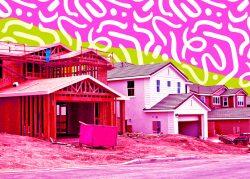Housing inventory is low across the country, but more and more newly built homes aren’t going to individuals or families — they’re going to investors.
More than one in four houses purchased by rental investors in the fourth quarter was a newly built home, according to data from John Burns Real Estate Consulting LLC and the National Rental Home Council reported by the Wall Street Journal. That represents a massive increase from the third quarter of 2019, when new homes comprised only a 3 percent share for these investors.
Most new homes are still purchased by individuals and families, according to the Journal. But cash-rich investors see potential in single-family rentals, especially as mortgage rates rise, while builders benefit from selling to investors in bulk, turning a profit more quickly.
“Single-family rental is likely to continue to show some strength,” said Robert Dietz, chief economist at the National Association of Home Builders.
Investors have the money to blow on new homes. The largest investors have only deployed about 25 percent of the $89 billion cumulatively amassed to build or buy new rental homes, according to research firm Zelman & Associates.
Single-family rentals have secured investors strong returns during the pandemic, aided by sustained demand, short supply and high prices in the housing market.
Read more



Securities advisory Green Street in November reported the expected risk-adjusted return on built-to-rent investments was 8 percent on average, higher than the weighted average return of 6.1 percent across all sectors.
At the time, Americans were being priced out of homeownership as prices on the housing market surged. People are now dealing with another challenging cost, as mortgage rates are soaring to their highest levels since the pandemic started.
The 30-year fixed mortgage rate has increased for multiple consecutive weeks, recently hitting 4.90 percent, according to the Mortgage Bankers Association. As a result, mortgage origination demand is decreasing. Two weeks ago, applications dropped 6.3 percent from the prior week, reaching its lowest volume since the spring of 2019.
[WSJ] — Holden Walter-Warner
